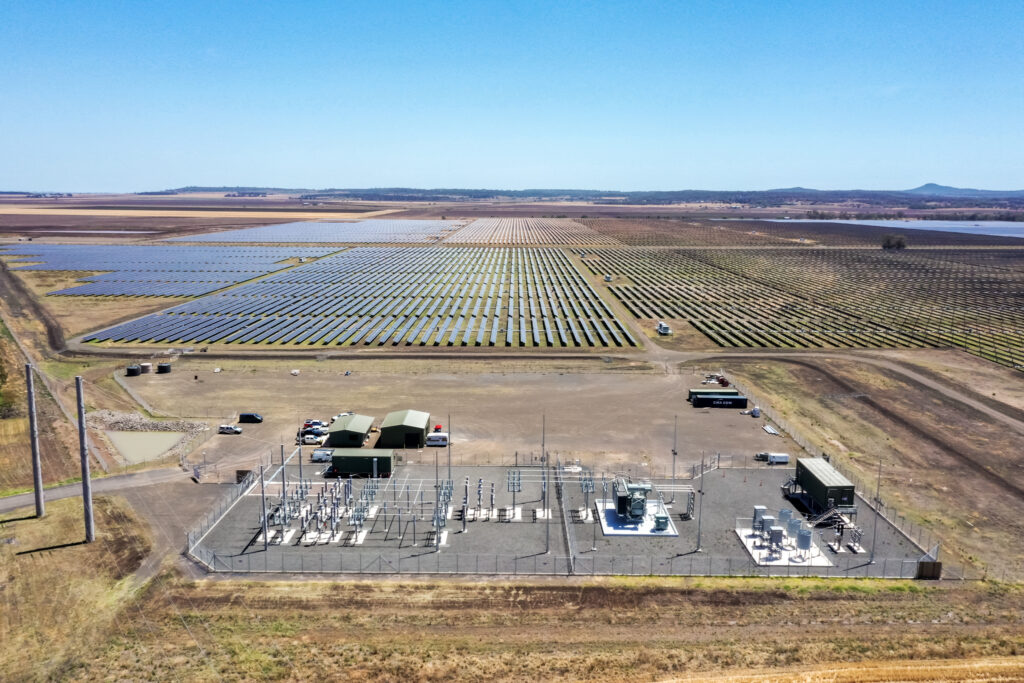The SuperGrid initiative that’s reshaping Queensland’s energy landscape

In the quest for cleaner, more reliable, and affordable energy, Queensland is at the forefront of innovation with its ambitious SuperGrid initiative. Part of the Queensland Energy and Jobs Plan, it represents a paradigm shift in our state’s energy landscape, integrating various elements of the electricity system into a cohesive network that already spans 1,500 kilometres of transmission lines.
But what exactly is the SuperGrid, and how will it shape the energy transition in Queensland?
What is the SuperGrid?
At its core, the SuperGrid is a comprehensive infrastructure blueprint that encompasses the entire spectrum of Queensland’s electricity system. From traditional poles and wires to cutting-edge solar and wind technologies, coupled with advanced storage solutions, the SuperGrid is a holistic approach to modernising Queensland’s energy infrastructure.
Launched in 2022, the SuperGrid is not merely a network of physical poles and wires, but a strategic action plan aimed at delivering clean, reliable, and affordable energy to power homes and industries across the state.
Supporting the energy transition
The SuperGrid is poised to play a pivotal role in driving Queensland’s energy transition forward. By embracing renewable energy sources and leveraging advanced storage capabilities, the SuperGrid will facilitate the integration of an additional 25 gigawatts (GW) of renewable wind and solar power by 2035. Plus, with at least 6GW of pumped hydro capacity, the SuperGrid will enhance grid stability and resilience, paving the way for a more sustainable energy future.
Yurika: a key player in the infrastructure blueprint
Central to the success of the SuperGrid is the collaborative effort of various stakeholders, including energy companies, the Queensland Government, and local manufacturing and assembly businesses. Among these partners, Yurika stands out as a key delivery partner, actively involved in projects aimed at enhancing Queensland’s renewable energy infrastructure.
A range of notable projects underscore Yurika’s commitment to advancing Queensland’s energy transition, including:
Swanbank Clean Energy Hub
Leading the charge in the Swanbank Clean Energy Hub, Yurika champions renewable energy integration, employing innovative solutions such as battery energy storage systems (BESS) to stabilise the grid and optimise clean energy utilisation. Yurika has been engaged to help develop one of Queensland’s biggest batteries at the Swanbank site. This battery will have a two-hour storage capacity which means it will be one of the largest in Queensland when complete.
Tarong Battery Energy Storage Systems
Stanwell’s Tarong Power Station is also set to host a 300MW BESS. This battery is scheduled to be fully operational by 2026. Yurika’s involvement in this project signifies a significant step forward in enhancing grid flexibility and reliability, contributing to Queensland’s sustainable energy future.
Central Renewable Energy Zone
Yurika is partnering with Stanwell and Tesla to build the largest committed battery project in Queensland. This mega 300MW / 1200MWh battery system will be capable of supplying four hours of energy to the grid and will be built within the Stanwell Power Station near Rockhampton.
Wambo Wind Farm
Collaborating with renewable energy developers, Yurika supports the Wambo Wind Farm project, which is aimed at harnessing Queensland’s wind energy potential. By integrating wind power into the grid, this initiative supports the state’s transition towards renewable energy while bolstering energy security and resilience.
Barcaldine Power Station
Yurika collaborates on the Barcaldine Power Station’s hydrogen generation project, marking a significant milestone in Queensland’s transition to a hydrogen economy. By integrating hydrogen production with renewable energy sources, this project exemplifies Yurika’s commitment to driving clean energy innovation and economic growth in the region.
Key milestones and benefits of the SuperGrid
The SuperGrid is a tangible roadmap for Queensland’s energy future.
By 2030, the SuperGrid aims to achieve 50% renewable energy generation, with targets of 70% by 2032 and 80% by 2035.
The SuperGrid is also set to inject $62 billion into the economy from 2022, fuelling growth and innovation across public and private sectors. From job creation to reduced carbon emissions, the benefits of the SuperGrid extend far beyond the realm of energy, positioning Queensland as a leader in the global transition towards a low-carbon future.
With its holistic approach to infrastructure development and collaborative partnerships, the SuperGrid is poised to unlock Queensland’s vast renewable energy potential while driving economic growth and sustainability.